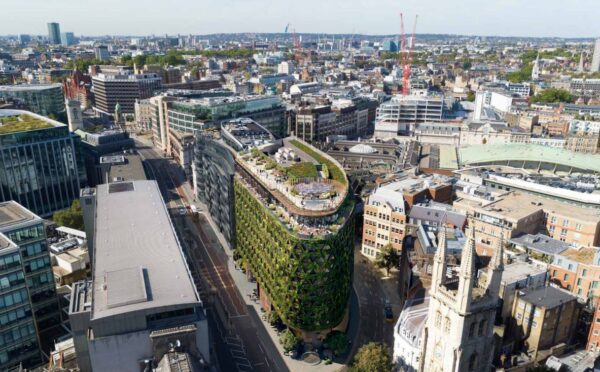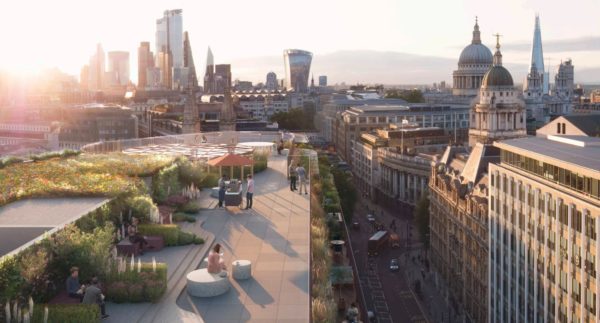The largest green wall in Europe has been approved for the City of London, with a new hotel to go where an old office block currently sits.
The developer claims the wall – made up of a mix of plants – will generate seven tonnes of oxygen in a year and extract nine tonnes of C02 annually among other benefits, such as reducing noise by absorbing some of the road noise that would normally just bounce off a solid wall.
Candidly, it would have been a surprise if the plans were rejected as there’s been little contrary opinion about the building, mainly thanks to the green wall. Go disapprove of a green wall today would be odd indeed. This development has an Urban Greening Factor (UGF) calculation of 1.37. The Mayor of London’s draft London Plan outlines a target UGF score of 0.3 for commercial developments.
Alastair Moss, Chair of the City of London Corporation’s Planning and Transportation Committee, said: “The City Corporation has a real interest in urban greening, and we hope this building will prove to be a fantastic example of what is possible for future developments.”
The top floor will be a viewing gallery — which they say will be fully open to the public, although the planning application is light on any restrictions they might impose on the number of days they can close it for private functions.
All images from the planning application.









Rather apt that Alastair Moss is into greening the City of London.
This site has looked run down for several years now.
I’ve seen several projects where they were approved due to their green wall. Only for the wall to die after a few months and a planning change submitted to replace it.
Even Westfield Shepherd’s Bush can’t keep their little green wall alive – they’re forever replacing dead plants.
I wonder whether anybody questioned the developers about how they intend to keep their alive ?!
That’s rather distressing to hear, not something that I’d thought possible. Someone should have checked the irrigation system was man enough. Or hadn’t been turned down by an unscrupulous developer/landlord perhaps.
Have to keep a check on them in the future then and if necessary visit the roof garden armed with a watering can or two.
The nature of the weather will look after outdoor plants. Elements such as dew, mist, rain, snow, hailstones, melting ice will water the plants growing outside the building.
I think it is nice green sight. Tourist attraction. A marriage venue?
The nature of the weather will look after outdoor plants. Elements such as dew, mist, rain, snow, hailstones, melting ice will water the plants growing outside the building.
I think it is nice green sight. Tourist attraction. A marriage venue?
First comment…
Evidently not all the time according to your correspondent above. Good ol’ Mother Nature of course takes care of the plants what’s planted in the earth, but I tend towards the view that those green walls seen dying are, in the very design of these things, hampered by a lack of moist bio-matter into which to sink their roots and from which to draw sustenance. Either that or they will have been hydroponic whose existence is most definitely at the whim of the building management: both are open to creative interpretation of planning law.
Such skulduggery can only be more hazardous, one hopes, as time marches on and we all get greener.